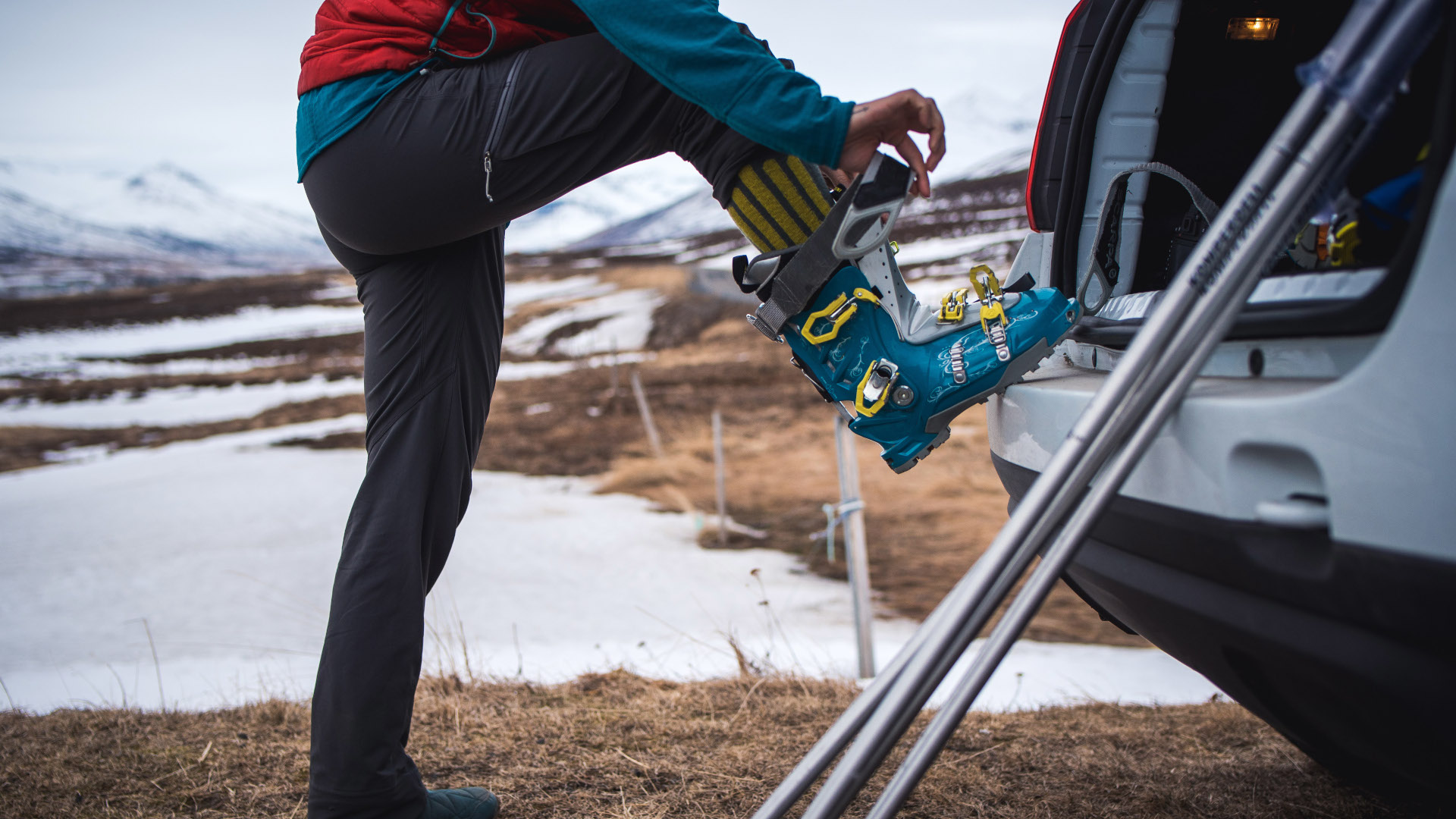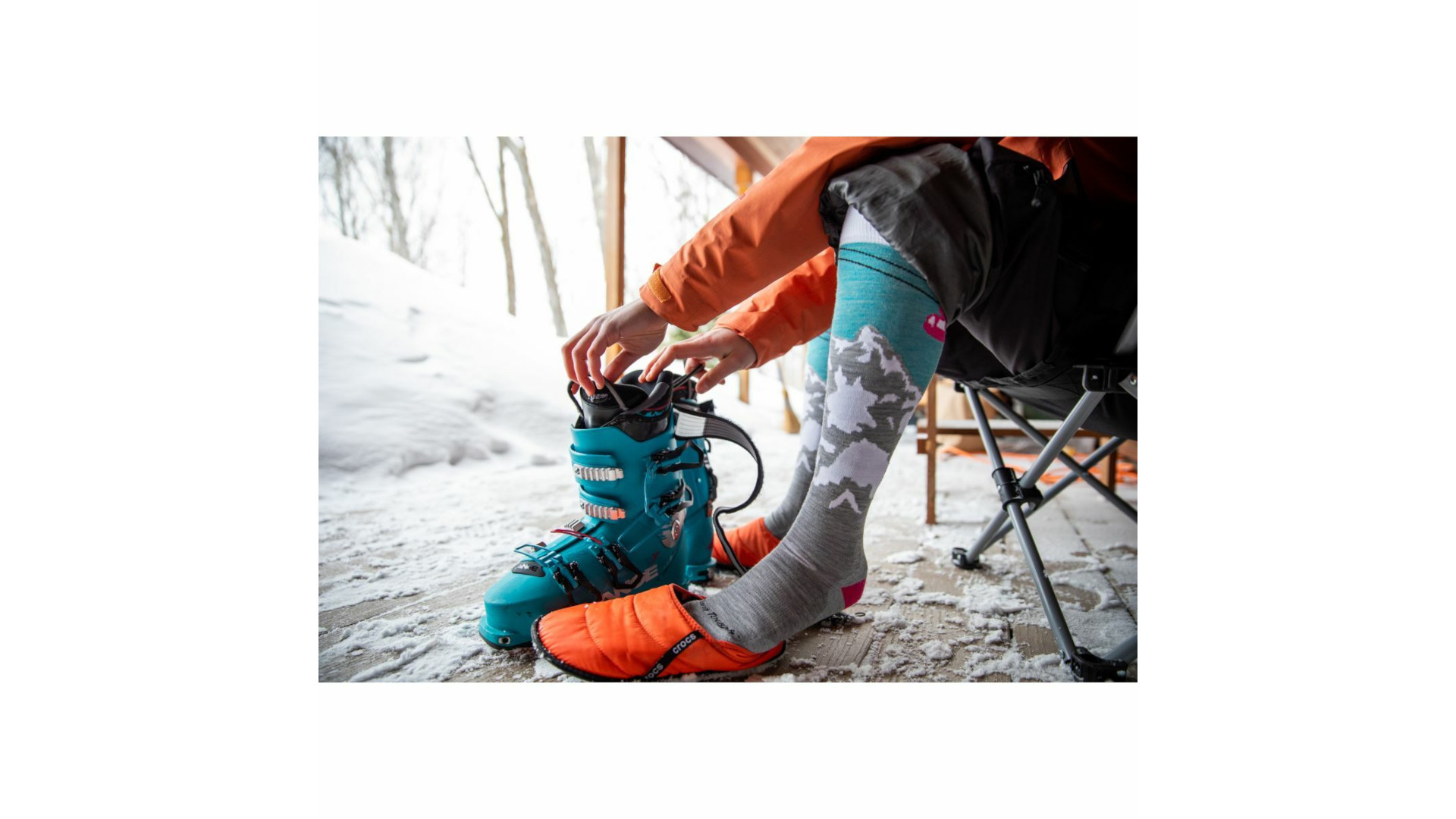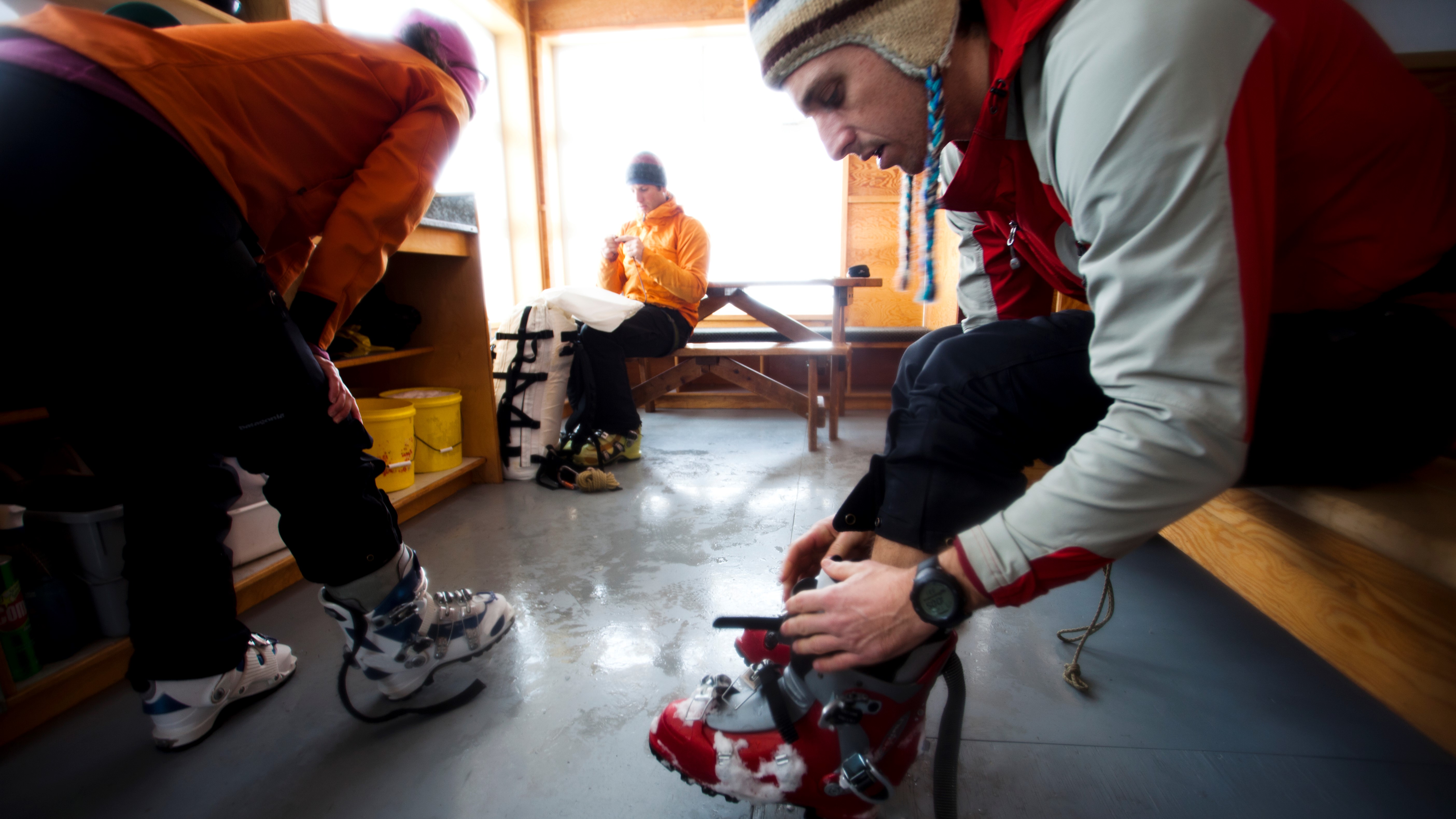How should ski boots fit?
We tackle all your questions around winter’s most uncomfortable footwear to help you find the perfect fit this season

Ski boots. They’re like the rock climbing shoes of winter sports. Experts will tell you they should be as tight as humanly possible to avoid your foot moving around when you’re skiing, which leads to instability and bruising. But then again, if they’re too tight, you can’t ski. So how should ski boots fit, really? In this article, we tackle all your questions around winter’s most uncomfortable footwear to help you find the perfect fit this season.
How should ski boots fit?
In short, ski boots should be as snug as possible without hurting, cutting off your circulation, or affecting your ability to activate your foot muscles. We’ll be honest, ski boots aren’t exactly known for being super comfortable, so it will definitely be tempting to size up a bit when you’re trying them on. Once you get out on the slopes, however, if your foot is moving around too much inside your boot, you can end up with bruised toenails and sore ankles and shins. Meanwhile, if your boots are too tight, you’ll cut off your circulation and get cold, numb feet, which isn’t ideal for skiing either. You want to be able to wiggle your toes while you're sitting on the chairlift to warm your feet up in time for the next run.

How to size ski boots
Ski boots are sized in centimeters using the Mondopoint sizing system, which doesn’t correlate directly with shoe sizes, though you’ll find online comparison charts that give you a rough idea of your closest Mondopoint size. The best way to figure out your Mondopoint size is to stand with your heel against a wall and measure the length of your foot in centimeters from heel to the tip of your longest toe. If your feet are different sizes, measure your longest foot.
You’ll want to wear the ski socks that you intend to wear on the mountain when trying on ski boots. Because the boots and the boot liner provide insulation, it’s not usually recommended that you wear very thick ski socks, as this can cut off circulation and actually make your feet colder. Check out our picks of the best ski socks to help you find the right pair.
It’s best to begin by trying on a pair of boots that are the same Mondopoint size as your feet. You may end up sizing up or down, but this is a good place to start. Buckle up the boots as tightly as you can. If the boot is the right size, you should feel slight pressure against your longest toe when you stand up straight, and a small amount of space between your heel and the back of the boot. If your toes aren’t touching the end of the boot when you’re standing up straight, the boot is too big. Bend your knees like you would when skiing and let your shins press forward forcefully into the tongue of the boots. Your heel should slide back and fit snugly against the back of the boot. At this point, you should feel almost no pressure in the toes. If they’re jammed uncomfortably against the boot in this position, the boot is too small.

In addition to finding the right length of ski boot, there are three other factors to take into account:
1. Width
Lots of ski boot manufacturers will cater to both wide and narrow feet, such as Nordica, Salomon, Technica and K2, so if you know that your foot width usually requires a specialty fitting, look for styles that will accommodate your needs.
All the latest inspiration, tips and guides to help you plan your next Advnture!
2. Shape
If you have a high instep, the shape of some ski boots can press uncomfortably against the top of your foot. This isn’t something that goes away with use and can leave you with painful bruising. There is no measurement for ski boots that have more height to accommodate a high instep, so the best thing to do is try a few pairs on and keep them on for at least 10 minutes. If the top of your foot starts to hurt, try a different pair.
3. Flex
It's also important to understand that different boots come with a different degree of flexibility. Softer boots are usually preferable for beginners while expert skiers and racers tend to choose a more rigid boot. Most boot companies use a flex rating that ranges from 50 (very soft) to 130 (most rigid), however this is non-standardized so you can use it as a general rule.

Will ski boots loosen up?
Ski boots themselves won’t loosen up, but the liners inside them will stretch out a little after about five days of skiing and mold to the shape of your feet. If they feel just ever so slightly too snug, they might be perfect by the end of next week. It is also possible to get the liners professionally stretched if you feel that the boot is the right fit but the liner itself is just slightly tight.
Should you size up or down in ski boots?
The answer to this question is, it depends. Beginner skiers might need a bit more room, in which case they might end up wearing boots a half Mondopoint size bigger, whereas expert skiers might size down by as much as a full size. The thing to remember is that, because your liners will loosen up, you can expect a slightly-too-small boot to stretch, but a slightly-too-big boot will never shrink.
- The best ski gloves: keep your hands warm and snug on the slopes
Julia Clarke is a staff writer for Advnture.com and the author of the book Restorative Yoga for Beginners. She loves to explore mountains on foot, bike, skis and belay and then recover on the the yoga mat. Julia graduated with a degree in journalism in 2004 and spent eight years working as a radio presenter in Kansas City, Vermont, Boston and New York City before discovering the joys of the Rocky Mountains. She then detoured west to Colorado and enjoyed 11 years teaching yoga in Vail before returning to her hometown of Glasgow, Scotland in 2020 to focus on family and writing.

